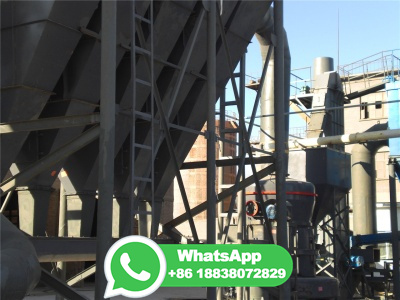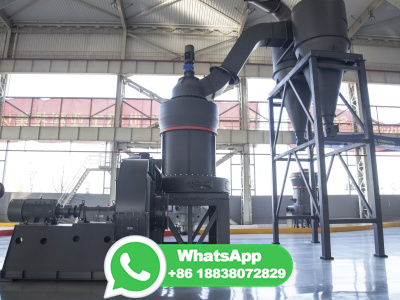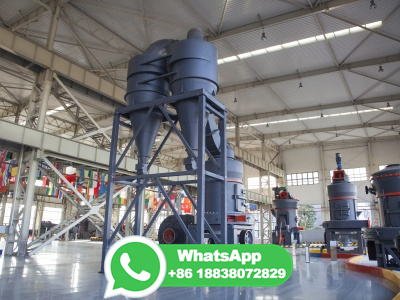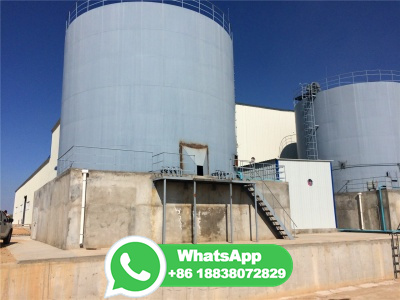
Direct coal liquefaction residue (DCLR) is a byproduct of coaltoliquid technology when raw coal is converted into liquid fuel, which is harmful to the ecological environment and human can be developed into a road asphalt modifier via different techniques, that can improve and enhance asphalt performance. In this paper, the global research status of DCLR in asphalt pavement is ...
WhatsApp: +86 18838072829
Diverse coal liquefaction procedures are tailored to the properties of the specific coal resource or desired final products: the solventrefined coal (SRC) process was developed to produce cleaner boiler fuels; whereas the Canada Centre for Mineral and Energy Technology (CANMET) hydrocracking process is intended to coprocess coal with ...
WhatsApp: +86 18838072829
Direct coal liquefaction processes have recently been based on a twostage processing approach: coal dissolution followed by upgrading of the solubilized products. It has been found that low rank coals are more difficult to liquefy in the first (solubilization) stage under conditions optimized for bituminous coals.
WhatsApp: +86 18838072829
The project is based on Exxon's donor solvent coal liquefaction process. The program will involve both smallscale RD work, and the design, construction and operation of a pilot plant with a capacity of 250 tons per day. The pilot plant will be built adjacent to an Exxon refinery at Baytown, Texas. The new agreement runs through December 31, 1982.
WhatsApp: +86 18838072829
It was envisioned that the auction process of coal mines for commercial mining would give a thrust to adoption of newer and cleaner technologies like coal gasification and coal liquefaction. 20% rebate was, therefore, extended for quantity under coal gasification or liquefaction. Also, extraction of Coal Bed Methane was allowed for mine ...
WhatsApp: +86 18838072829
However, similar to other coal liquefaction processes, the DCL process has not been widely commercialized mainly because of economic uncertainty, high CO 2 emission, and high capital cost [1,2].
WhatsApp: +86 18838072829
Actually in a direct coal liquefaction process, the amounts of coal for hydrogen production and steam generation are about 31% and 10%, respectively and the main environment pollutants are generated from the combustion of fuel coal for power and steam generation. ... View PDF View article View in Scopus Google Scholar [6] Sun, ...
WhatsApp: +86 18838072829
Library. Direct Liquefaction Processes. Reason for Discussion of Direct Liquefaction of Coal in Gasifipedia. As the following discussion of Direct Coal Liquefaction (DCL) explains, the fundamental process approach of DCL does not involve gasification at all. Therefore it would seem to be entirely out of scope of Gasifipedia.
WhatsApp: +86 18838072829
Process. The Exxon donor solvent process is a noncatalytic processing of solventslurried coal in a highpressure liquefaction reactor. Coal is cleaned, crushed and fed to the slurry dryer, where water is removed. The dry crushed coal is slurried with the hydrogen donor recycle solvent. The coal slurry is treated with hydrogen and heated in a ...
WhatsApp: +86 18838072829
The effective utilization of the coal liquefaction residue (CLR), which contains about 80% organic matter, is of great significancefor improving the oil yield of the direct liquefaction...
WhatsApp: +86 18838072829
This COconversion process generates CO 2, which is captured before it is released via an adsorption process at a purity as high as 90%. The other route is the power and steam consumption for ICLs. The generation of power and steam via coal combustion leads to carbon emissions with CO 2 concentrations in the range of 10~20% in the exhaust gas.
WhatsApp: +86 18838072829
A coal liquefaction pilot plant of the NEDOL process, supported by the New Energy and Industrial Technology Development Organization (NEDO), was in successful operation for a total of 269 days at ...
WhatsApp: +86 18838072829
Coal liquefaction is a process in which coal is converted into liquid fuels or petrochemicals. There are several processes used to accomplish this task, the two most common being the "indirect route" and the "direct route". [1]
WhatsApp: +86 18838072829
Direct coal liquefaction (DCL) The conversion of coal to liquids via dissolution and/or hydroprocessing, without first gasifying the coal DOE United States Department of Energy FischerTropsch reaction The catalytic conversion of synthesis gas to primarily hydrocarbons, the discovery being credited to Franz Fischer and Hans Tropsch
WhatsApp: +86 18838072829
of this study are that an opencycle CO2 process will o er lowest energy consumption below 20 C cooling temperature and that over the cooling temperature range 15 to 50 C, the minimum energy consumption for all liquefaction process rises by around 40%. Keywords: CO2; liquefaction; CCUS; optimization; ambient temperature 1. Introduction
WhatsApp: +86 18838072829
The direct liquefaction process ( Fig. 3) employs a coal ground to a fine powder, solvent, hydrogen, and catalyst employed at elevated pressures ( psig) and temperatures (400450°C). The solvent mixed with the coal forms a pumpable paste.
WhatsApp: +86 18838072829
Indirect liquefaction requires an intermediate gasification of the solid coal to form a synthesis gas, which is then converted to the liquid product. This process results in the complete dismantling of the coal structure. direct liquefaction, coal is exposed directly to hydrogen at high temperatures (450C) and high pressures (kPa ...
WhatsApp: +86 18838072829
the process to dissolve the coal and to transfer externally produced hydrogen to the coal molecules. Catalytic liquefaction resembles solvent extraction, except that hydrogen is added to the coal with the aid of a catalyst. Figure presents the flow diagram of a typical solvent extraction or catalytic liquefaction plant. These coal ...
WhatsApp: +86 18838072829
water, boiler feed water, and cooling water. Process water is used in the liquefaction process and often plays a part in chemical reactions. Boiler feed water is used to produce steam, and much of it is recovered and returned to the boiler. Cooling is typically done using circulating water. Cooling water loss is often the most significant factor.
WhatsApp: +86 18838072829
Coal liquefaction residue is the solid waste from the liquefaction system and accounts for about 2530% of the feed. 4 Thermal conversion through gasification is a better way to deal with this residue, which is of great significance in economical efficiency. 5 It should be noted that ironbased catalysts are widely used in coal liquefaction, as ...
WhatsApp: +86 18838072829
Direct Coal Liquefaction Process Makeup Hydrogen Coal + Catalyst Recycle H 2 Gas Recovery Treatment Coal Liquefaction HDonor Slurry Slurry Hydro treating Fractionation DeAshed Solvent Deashing Oil (DAO) Refining H 2S, NH 3, CO x C C 2 LPG Gasoline Diesel Fuel Heavy Vacuum Gas Oil (HVGO) Ash Reject Direct Coal Liquefaction Plants
WhatsApp: +86 18838072829
Influence of coal properties on coal conversion processescoal carbonization, carbon fiber . 123 Table 5 Coal parameters with significant influence on liquefaction process
WhatsApp: +86 18838072829
The fuels considered include high and low sulfur bituminous coals, lignite, anthracite, the products of various coal gasification, liquefaction, and solvent refining processes, coal loaded with ...
WhatsApp: +86 18838072829
Direct coal liquefaction (DCL) commonly refers to catalytic hydrogenation of coal in a recycled oil solvent at high pressures with a catalyst. While a range of process configurations have been proposed, the most common version involves at least two high pressure slurry reactors in a series using a dispersed ironbased catalyst and hydrogen ...
WhatsApp: +86 18838072829
Coal resources have been used to produce liquid transportation fuels by several process routes collectively referred to as coal liquefaction or, more generally stated, as coal to liquids (CTL). Early records of coal conversion to liquid fuel date to 1913 and an extraction process developed by Friedrich Bergius in Germany [ 7 ].
WhatsApp: +86 18838072829
Abstract. The hydrogentransfer reactions that occur during coal liquefaction reactions are essential for the conversion of intractable coal molecules into liquids and soluble products. Virtually all the practical processes for coal liquefaction, such as the solventrefined Coal II process, (1) the Exxon donorsolvent process, (2) the ...
WhatsApp: +86 18838072829
Coal gasification can be an enabler for the polygeneration concept Direct coal liquefaction is highly coal specific and very costly due to severe process conditions Due to its advantages, particularly the suitability for low grade and low rank coal, the Sasol®FBDBTM gasification technology will continue to play a
WhatsApp: +86 18838072829
The second way to utilize solvents for coal processing is the liquefaction process. A large variety of studies in the literature have investigated the liquefaction processes of diverse types of ...
WhatsApp: +86 18838072829
Coal liquefaction is a process of converting coal into liquid hydrocarbons: liquid fuels and process is often known as "Coal to X" or "Carbon to X", where X can be many different hydrocarbonbased products. However, the most common process chain is "Coal to Liquid Fuels" (CTL).
WhatsApp: +86 18838072829
In this work, the effect of an ironbased catalyst from coal liquefaction on coal gasification was studied. Two catalyst loading methods and three catalyst loading contents were taken into consideration. Besides, the carbon structure, surface morphology, and element distribution of coal char and gasified semichar were investigated, and the interactions between the catalyst and internal ...
WhatsApp: +86 18838072829
Direct Coal Liquefaction (DCL) commonly refers to catalytic hydrogenation of coal in a recycled oil solvent at high pressures with a catalyst. While a range of process configurations have been proposed, the most common version involves at least two high pressure slurry reactors in a series using a dispersed ironbased catalyst and hydrogen ...
WhatsApp: +86 18838072829
were ever built or operated for direct coal liquefaction. It was reported that the four major operating coal liquefaction pilot plants in the US all experienced problems including severe equipment The commercial Shenhua plant will be a significant step in determining the viability of the direct liquefaction process route.
WhatsApp: +86 18838072829
The purpose of coal conversion is the production of alternative fuels, including motor fuels, or the generation of a range of chemicals from coal by process routes, such as gasification, direct and indirect liquefaction, hydropyrolysis, and plasmapyrolysis. The application of these techniques is essential if the large reserves of coal are to be ...
WhatsApp: +86 18838072829